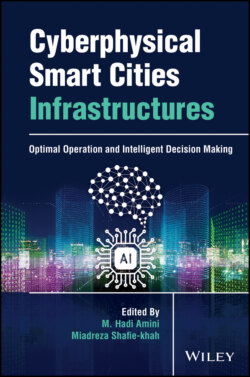Читать книгу Cyberphysical Smart Cities Infrastructures - Группа авторов - Страница 16
1.6 Future of AI and Healthcare
ОглавлениеSo, what is next? Based on Moisejevs graphs, we can predict that AI will continue to grow exponentially over the next several years [6]. However, the path in which it grows will be determined by the innovators behind the technology. The US government has always considered America to be at the forefront of innovation and driving technological advances [4]. Yet, other countries are working hard and in some areas are surpassing American innovation. To keep American innovations competitive, the US government has laid out a framework that they believe is necessary for the future.
In 2019, there was an update to the National AI R&D Strategy that did not exist when it was previously published in 2016. This update pertained to the partnership between the US federal government and the outside sources. There are four main categories in which these partnerships fall into: Individual project‐based collaborations; joint programs to advance open, precompetitive, fundamental research; collaborations to deploy and enhance research infrastructure; and collaborations to enhance workforce development, including broadening participation [4]. These areas all strive to enhance AI by linking universities and students with industry partners to yield real results.
It makes logical sense to establish these private–public partnerships and encourage university students to study and advance AI. The bulk of research done on the subject is by universities and then industry takes that research and develops products based on it. If the United States aims to remain as one of the top innovators of AI, then they must continue to research deeper uses of AI. By providing funding, students can delve deeper into the subject matter and advance the field.
There are several US federal agencies that have already adopted embracing these partnerships. These include, but are not limited to, Defense Innovation Unit (DIU), National Science Foundation (NSF), Department of Homeland Security (DHS), Silicon Valley Innovation Program (SVIP), and Department of Health and Human Services (HHS) [4]. It is clear through the HHS already working on establishing partnerships that AI and healthcare will continue to grow and be of great importance. The main goal of the HHS partnerships is to develop new AI pilot products and establish research into AI and deep neural networks to further AI's uses in the healthcare field.
To some degree, it is possible to predict what is coming for AI. This can be achieved by looking at the current trajectory and extrapolating what will be coming next. However, this extrapolation is extremely limited. Deep neural networks as a basic structure for AI existed back in the 1980s; it was not until recently when there was enough data and technological capabilities that this became a reality [4]. Without knowing what technological advances will disrupt the status quo or become available, it is impossible to predict the far future of AI. This is the underlying importance of being viewed as a top innovator and researcher into the subject, so the United States may be first with the latest and greatest AI applications.
